Hey folks!
Different day, same shift! I've used this punchline before. How's everything going? I hope everyone of you had a great time during the weekend! I took the time to enjoy nature this weekend. A new week is an opportunity for a new beginning though! Okay, I hate Mondays and Tuesdays... It's been a wonderful but rather exhausting day so far, however I'm back in business with another Engineering blog. No time to waste though, so let's get this started! Oh, no...
This time I'd like to take the chance to create an introductory post about Cartography, which is the scientific field of creating and building maps through the utilization of spatial information. It is the science of extracting precise geographic information by accurately constructing and properly reading maps. Cartography is also considered the art of simplifying and simulating the geographical environment as well as demonstrating spatial relations between broader areas.
As I mentioned, this is an introductory post so I will just share general information regarding the scientific field of creating accurate representations of our 3D world on a 2D piece of paper. This time we will be discussing the objective of cartography as a scientific field. I will also share information regarding the different basic characteristics of maps, so stay focused! Is anyone there?
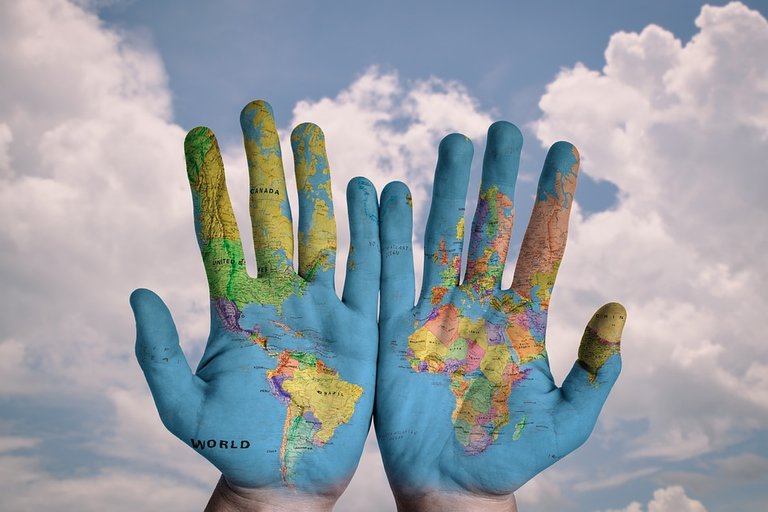
Image Source: pixabay.com
Objective
This specific scientific field serves the purpose of reducing a surface's spatial characteristics and demonstrating analyzed geographic information in the form of a presentation that is easily understood by the average user with the utilization of maps. Cartography's main objective is to make all sorts of spatial information available regarding our planet's surface and its spatial characteristics noticeable. It is worth noting that this exact process in not unilateral, which basically means that there are cases in which geographic entities are actually magnified in order to become visible, especially in small scale maps. Even though the application of such methods as a sole activity cannot be considered cartographic, it is undoubted that the end product is an image which in many cases can be considered a map. As a result, just like human speech and writing are in fact basic tools of advanced communication and expression, maps are actually tools which can be used to expand one's field of vision and let them collect information about large geographical entities or even microscopic particles and the correlation between them.
However things are complicated. Even the simplest maps are way more sophisticated than just a plain reduction of size. Maps are meticulously designed tools created and utilized for the observation, registration and further comprehension of the correlation between geographic entities, with the fundamental function of making spatial information visible and precise. Nowadays there's a huge variety of maps being used by military and political authorities for the registration of important events or the surveillance of military forces etc. All maps serve the purpose of enhancing the observer's geographical perception and offering knowledge that would otherwise remain hidden out of sight. Ever since humanity started observing the natural geographical environment, the ways and methods of registering and analyzing spatial information have been advancing dramatically. Different fields of expertise were born mainly due to the fact that Cartography combines various scientific fields, as a result many different ways and methods of building maps serving various purposes by using specific techniques emerged and started being broadly used.
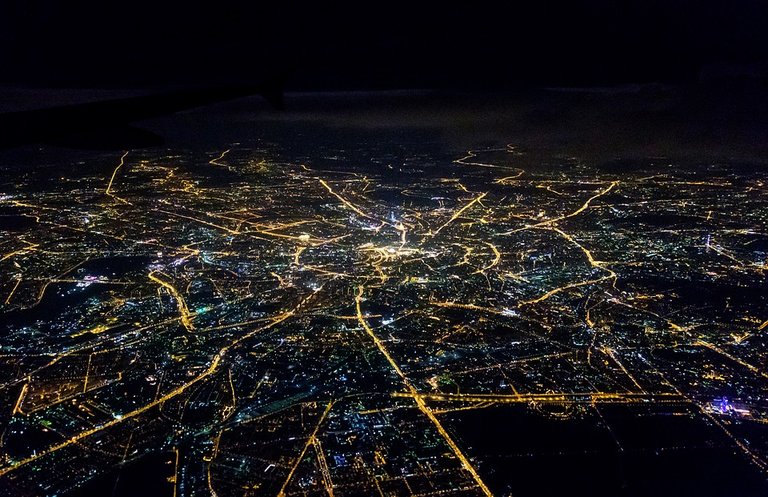
Moscow from above./ Image Source: pixabay.com
It is important to always keep in mind that the objective of all maps is always the same; all maps serve the purpose of defining and demonstrating the shape and correlation of continuous geographic entities. Let's also not forget that the cartographic methods and techniques used are theoretically identical, even in cases where maps of the same geographic entity look totally different due to their initial design of serving different purposes. For instance a map that was built in order to help Engineers register the different sorts of land use regarding a topographic surface should provide the accurate demonstration of the shape of the ground, the residential distribution, the road network, the geological composition etc, whereas a map built to help tourists roam the streets of a city would definitely provide different sorts of information and would therefore emphasize on different spatial correlations. Needless to say the precision demanded in the design and engraving of any kind of construction premises the production of accurate maps for the accomplishment of a successful and safe conclusion.
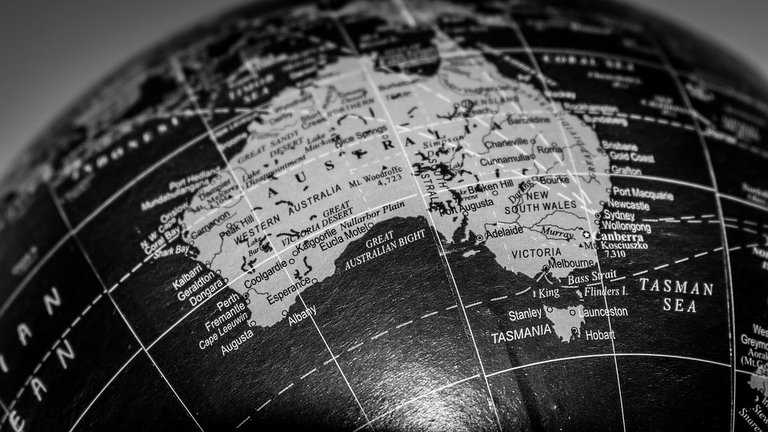
Image Source: pixabay.com
Cartography is a significant section of Engineering Graphics, as this specific scientific field provides Engineers with the opportunity and ability to process, analyze and formulate beliefs, ideas, shapes and correlations between those geographic entities efficiently. It is safe to say that Cartography as a scientific field is directly related with all sorts of activites with the purpose of presentation and therefore the utilization of maps is a top priority issue in Engineering. The first thing to do when facing a problem is to map it. By mapping a phenomenon we can make more accurate observations and design the most efficient course of action according to the desired possible outcome. This induces a need for a deeper understanding of the fundamentals of Cartography and Geometry and the acquisition of practical skills needed for the correct and precise extraction of the information included in maps. The observer can make even more precise and safe assumptions by possessing knowledge of the process of collecting, analyzing and classifying data and information that is utilized in order to design and build a map.
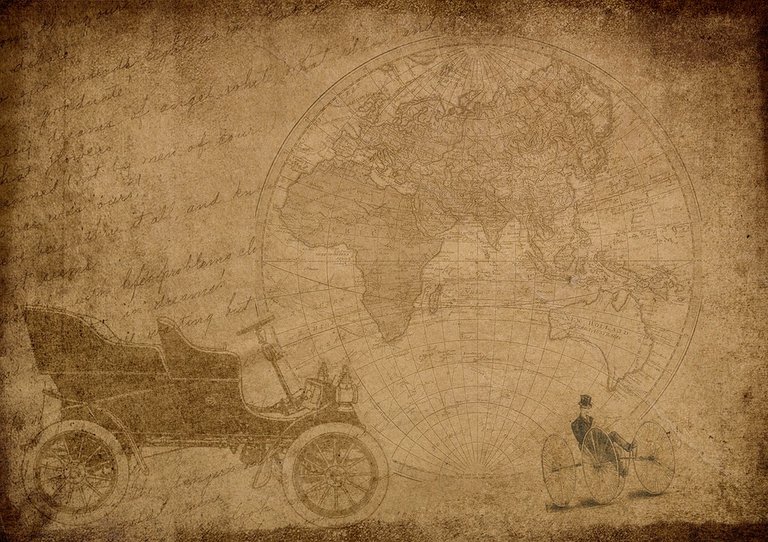
Image Source: pixabay.com
Basic Characteristics of Maps
There's a huge variety of different sorts of maps, providing observers with information regarding the purpose they were designed to serve. For instance maps used on television in weather forecast presentations are totally different than maps used by tourists for navigation or sightseeing. However, even in cases of totally different maps built for rather unrelated reasons, there are some fundamental similarities regarding the nature and objective of mappings as well as the scientific approach taken in order to include geographic information with precision. All maps deal with two different aspects of reality: geographic entities' location and characteristics. Geographic location is a measurable quantity which can be calculated accurately with the use of coordinates that refer to a 2D surface in particular in Cartography. Regarding characteristics, they can be classified in two broader categories: qualitative and quantitative characteristics. It is worth noting that those two aspects of reality that are mainly studied and utilized in Cartography create four basic categories of spatial relations between geographic entities and qualitative or quantitative characteristics, as demonstrated below:
Spatial relations between geographic locations that include no reference to any sort of characteristics, such as the measurement of distances or the definition of geographic directions regarding navigation.
Spatial relations between different characteristics of the same geographic entity by utilizing observations regarding mainly non-continuous attributes, such as weather phenomena or types of soil and substrates.
Spatial relations that define the variation of specific characteristics' values in various geographic locations, such as the alteration of the height of rainfall mainly due to topography.
Spatial relations that are used to describe and define correlations of distribution between different geographic locations, such as the average income earned per person in a specific area.
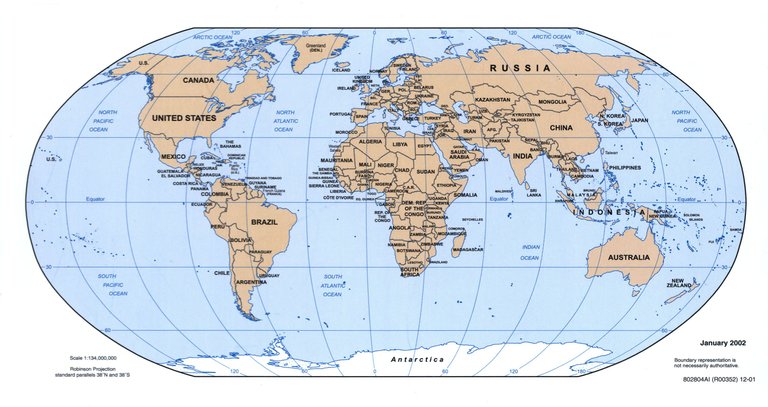
CIA Political World Map 2002./ Image Source: commons.wikimedia.org
All sorts of topological attributes concerning spatial relations can be identified, measured and calculated and therefore maps are powerful tools designed to enhance and provide accurate spatial analysis. All geographic maps are in fact intended to be reductions of reality and as a result maps are obviously small compared to the geographic areas depicted. There are specific dimensional analogies between reality and maps, which are expressed through the use of a scale. As a result, there are limitations regarding the volume of information that can be stored and demonstrated on a map due to its limited and comparatively small size. It is safe to say that the map scale determines the volume of information that can be practically included. Furthermore, the design and creation of maps induces the need for the utilization of precise geographic transformations, which are mathematical formulas through the use of which Engineers can project a 3D object on a 2D surface with satisfactory accuracy. This sort of sytematic transformation is commonly referred to as topographic projection.
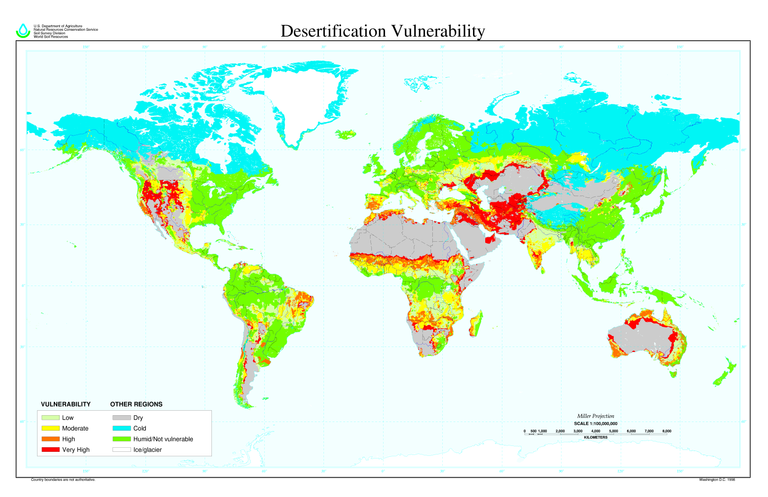
Desertification Vulnerability Global Map./ Image Source: commons.wikimedia.org
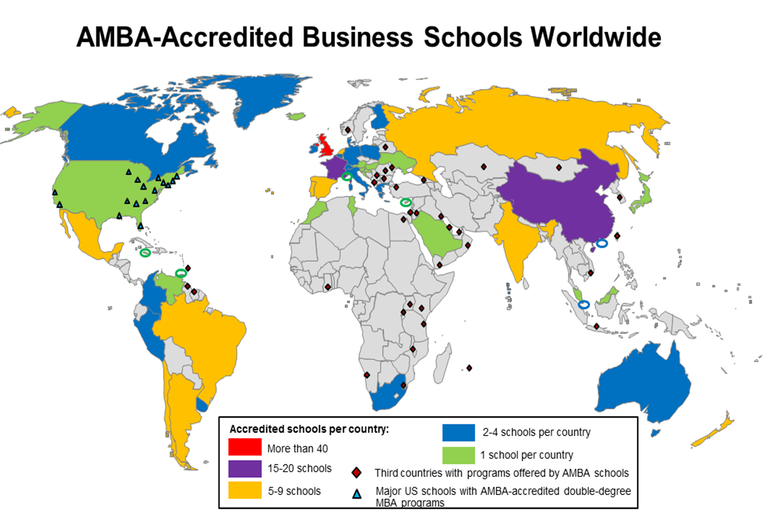
AMBA Accredited Business Schools Global Map./ Image Source: commons.wikimedia.org
It is rather obvious that the proper selection of the cartographic projection affects the way a map can be utilized. Isn't it? Engineers often use cartographic reference systems which are also known as flat coordinate systems mainly due to the fact that they can be utilized for the calculation of distances on the 2D mapping surface. Not what you thought, flat-Earthers, go away! Needless to say, a reference system's precision is always relevant to the cartographic projection utilized. Let's always keep in mind how all maps are actually simplified simulations of the real world though. The 3D space is so complicated and full of information that it is absolutely inevitable to exclude massive amounts of information while creating a depiction of reality, as the creation of an identical model of the real word would demand such large volumes of information to be demonstrated that it would only complicate things further and therefore fail to communicate and provide the observer with geographic information. Thus, every map is in fact meticulously designed and built in order to deliver specific sorts of information which have been selected as appropriate for the map's purpose and have been classified and simplified to be easily comprehended.
It is also worth keeping in mind that all maps utilize special signs which refer to specific characteristics of reality in order to accomplish an advanced and precise depiction of the real world for the observer. The meaning behind those unique signs is certain and all signs are meticulously designed and placed. Cartographic Symbolization is not necessarily global, meaning that symbols used by Engineers in building maps might differ in various places of the Earth with the exception of a few international signs that are broadly used all over the globe. Αll symbols and signs used in building maps are mainly comprised of graphical elements, such as lines, dots and patterns. That said, a user should always try to extract information by comparing the symbols observed to the ones included in the map memo board, which is usually placed in one of the map's corners and is meant to provide detailed information regarding the map symbols. Graphical elements affect the map's readability irrespective of the way they are placed and demonstrated on a 2D piece of paper or a computer screen. Here's another fun map for those of you who actually made it this far.
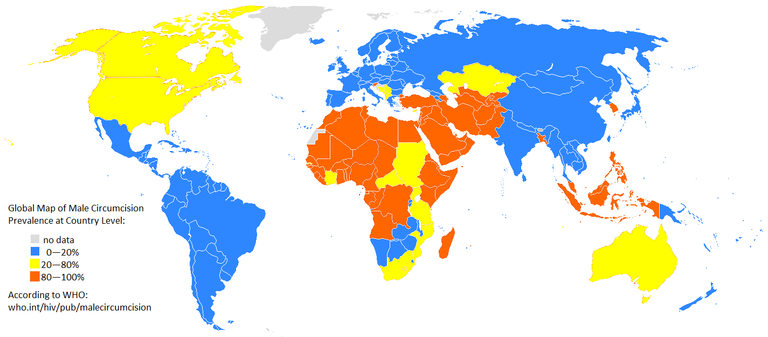
Global Map of Male Circumcision Prevalence./ Image Source: commons.wikimedia.org
That's it for today guys! Hope everyone of you made it till this point. I will definitely create a trilogy regarding this Introduction to Cartography series in order to make things as simple as possible. I will keep trying to approach business in a humoristic manner to prevent boredom from killing anyone reading these blogs of mine! These posts are introductory however they might start getting a bit more nerdy, so stay tuned and follow me at your own risk. Thanks for reading! :)

IMAGE SOURCES:
REFERENCES:
University Textbooks & Course Lectures:
Χαρτογραφία Ι / Cartography I - TSOULOS LYSSANDROS (National Technical University of Athens, School of Rural and Surveying Engineering, Course Lectures)
Xαρτογραφία ΙΙ / Cartography II - NAKOS BYRON (National Technical University of Athens, School of Rural and Surveying Engineering, Course Lectures)
Στοιχεία Χαρτογραφίας, Πανεπιστημιακές Εκδόσεις Ε.Μ.Π. / Εlements of Cartography, University Publications NTUA - ROBINSON, MORRISON, MUEHRCKE, KIMERLING, GUPTILL (National Technical University of Athens, School of Rural and Surveying Engineering, University Textbook.)
Internet Links:
https://www.esri.com/training/catalog/596e584bb826875993ba4ebf/cartography./
https://study.com/academy/lesson/what-is-cartography-definition-history.html


Thank you for your attention!
Hope you enjoyed this post and did learn a thing or two.
Follow me and stay tuned for more engineering blogs.
Highest Regards
@lordneroo
I wonder if any of the people who design computer games that are largely based on maps (e.g. Civilization) are cartographers!
Hey @alexander.alexis!
Thanks for dropping by! I highly doubt that people who design computer games are Cartographers, mainly due to the fact that those Engineers basically create nonexistent geographic entities. Maps used in video games are not accurate depictions of actual real-world surfaces; even in cases where a map resembles small or large areas that exist in reality, there's absolutely no demand for precision as no measurements nor technical constructions are taking place whatsoever. Some basic principles of Cartography are definitely followed though, especially regarding the creation of map memo boards and the use of symbols. But no precision regarding Geometry means no Cartography!
Hope you found this comment useful!
Thanks. I just basically thought maybe they have consultants, or they do independent research, same way they do historical research to make a game in Total War, say (which also uses actual world maps, unlike Civ games). These companies have big money so I thought maybe it's not beyond the realm of possibility that the employ pros to do that kind of stuff, or at least check for accuracy.
My pleasure! :)
I totally get what you're saying and since I'm no gaming expert I suppose there might be cases where game maps resemble actual geographic entities. Keep in mind that nowadays services like Google Earth provide users with the ability to collect spatial information and create mappings with satisfactory accuracy for such purposes. That said I certainly do believe that such companies could hire pros to do the job; I just don't think they would have to employ any Rural & Surveying or Civil Engineers. Of course I could be wrong, it just seems unecessary to me. However, I'd be glad to know that I'm eligible to work in gaming companies as well!
Makes sense.
Btw, are you a native speaker of English? Your references say 'Greek' but your English is too perfect!
Thanks for your kind words! I'm actually Greek which basically means English is my second language! I really appreciate that, thanks!
Putting a 3D sperical earth on a 2D surface is quite a hectic job..! 💪
Ur quote about the cartographic methods reminded me of a general issue of "Mercator projection".
The most popular format of the world map we see today visualize "Greenland" bigger than "Australia" in amount of land area. But in practical, "Australia" is much bigger...!😃
Anyways, a good informative article..! 👌
Looking forward to the next issue...! 🤞
Hello Christina! Thanks for reading and leaving a comment!
The thing is that distortion regarding distances gets larger as we move away from the Equator and towards the Poles, mainly due to the projection's reference parallel. Distances on the map might look different, however if you do take a look at the map scale you will realize that it's just a graphical distortion that is proportional to a point's distance from the Equator. Map squares might look bigger as we move towards the Poles, however they do cover the exact same amount of surface area.
Thank you for your kind words!
Highest Regards
@lordneroo
yes, i agree that mapping the spherical surface needs special notations on certain part..! 👍
thanks for clarifying the issue...! 🙌
~ best regards...!
@lordneroo, maps are indeed powerful tools. They are guidelines for various professionals especially engineers.
When we consider siting of a wind power farm for instance. One will need the wind characteristics of various locations to select the best for such application. With the availability of wind maps, the work becomes easier, even though there are still other factors that must be taken into consideration.
Thanks!
Hey there, thanks for your comment!
You're absolutely right, that's an interesting example of how mappings can be useful in extracting topological and topographic information regarding the Earth's natural terrestrial surface. Keep in mind that 98% of winds on a given point of the Earth's surface blow in the same direction, this is also referred to as the prevailing wind.
Thanks for dropping by!
You are absolutely right. Wind farms are usually built putting into consideration this prevailing wind direction.
Although some are also based on non-prevailing wind directions.
It's really nice interacting with you @lordneroo. By the way, what's your discipline.
I have a Master's Degree in Rural & Surveying Engineering. :) And yours?
A Bachelors degree in Mechanical engineering
The thing that always amazed me with cartography consists in the techniques used to represent in a 2D way a 3D spherical object. And then of course when on starts having a look to the different maps of the globe.
By curiosity, which degree(s) do you need to become a cartographist?
Hey @lemouth, thanks for dropping by! :)
Engineers use cartographic projections which are methods of representing 3D objects in a 2D way by utilizing mathematical formulas and basic Geometry knowledge. There are many ways to depict a spherical object on a 2D surface using various cartographic projections which have been developed based on different geometric shapes, thus creating entirely different maps of the very same geographic entity. I will elaborate on the way this process works in one of my next posts.
A Diploma (M.E. / Master of Engineering Degree) in Rural & Surveying Engineering is necessary in order to become a Cartographer.
Thank you for reading and leaving a thoughtful comment!
Highest Regards
@lordneroo
Cool! I am looking forward to read the next posts ^^
Wow, I never thought much about cartography, just taking for granted all the maps, globes and navigational tools I use. This is a complex field! Lots of great info in this post. Thank you!
Thanks for dropping by!
This is just an introductory post and I will be making two more of those before I start sharing advanced technical information regarding Cartography.
I'll keep a watch out for them. :-)
That's great to know, I'm glad!
One of my favorite fields of study is history, so I spent a lot of time deciphering some of the historical maps and comparing them with the maps of the same area which were created in different eras. Reading through your post I started wondering about people who were making maps hundreds of years ago without the technology we posses today. Do you by any chance know what kind of methods did cartographers in history use to gain knowledge necessary to draw the maps (besides traveling themselves and talking with travelers)?
Hey, thanks for reading!
I share your passion for history and therefore usually provide historical information regarding the scientific fields I blog about. The very first Cartographers were utilizing terrestrial observations which certainly included large estimation errors. I will elaborate on this in one of my next posts coming out soon and I will definitely provide historical information about Cartography. Be sure to stay tuned if you did enjoy this post! I'm not dodging your question, I just have a lot to say and have already planned to include such information in my next parts of this series. My next blog will be published within the next 2 days.
Thank you for reading and leaving a comment!
Great, I will check it out once you publish it :)
This is an art that shows the beauty of science. Anything art +science is pure magic
Agreed! :)
Thanks for the resteem!
Uwc
Oh @lordneroo, you started your series already.
Gosh, I am never going to look at maps like I used to after reading this incredible post. Like @bananamemos said, the complexity of it all !!
I truly like this sentence:
While I understand you meant it literaly, I also can apply this to my field in a metaphorical way :)
Thank you 😊🌷
Hello @abigail-dantes! Thank you for visiting my blog and spending time to read my post!
I'm glad if you did learn a thing or two! Cartography is indeed a very complicated scientific field. Mostly because Engineers depict 3D shapes on 2D surfaces and as a result any information regarding the third dimension (altitude) has to be included and demonstrated by utilizing various techniques and graphical elements according to mathematical formulas. I will definitely elaborate on this process in one of my future posts!
Mapping a problem is the first thing one should do and this is something I learned in University but can definitely be applied in various scientific fields and aspects of life in general! It is all about effective supervision and thus providing observers with the ability to make efficient choices when facing a situation.
Thank you for your kind words! I'm more than happy you enjoyed this post.
Highest Regards
@lordneroo
Hello @lordneroo, I'm looking forward to reading this series. Are you planning to look at projections? I still have a bit of trouble getting my head around the vast number of mapping projections people have come up with for various purposes!
Hello there! :)
I'm more than happy to know you are looking forward to reading this series! We will definitely have a look at projections and discuss the various kinds as well as the maths behind the application and development of cartographic projections. As this is an introductory series regarding Cartography, I will share some general information regarding cartographic projections in my next publication. However I will certainly take things to the next level and start sharing advanced technical information within the next 5- 10 days.
I really hope to see you again in my blog, I'm more than glad if you enjoyed this post!
Have a great day! :)
It's an interesting topic for me because it translates directly to celestial cartography. There are lot of times you need to familiar with different projections, here is a screen cap from Guide 9.0 (the Planetarium program I use for astronomy) to show some of the selections that are available.
So thank you for your post @lorneroo !
Sounds like an interesting software! Oh yeah! By the way why are you using the stereographic projection? Engineers often use this projection in particular in Geotechnical Engineering to determine if it is safe to proceed with technical constructions.
That is a very good question! I do mess with those projections from time to time, particularly if I doing wide angle charts, to see which one gives the best outcome.
Being A SteemStem Member
I'd love to learn about how people used to draw maps in ancient times. Do you know much about how underwater demolition crews
in the navy map create underwater maps?
Hi there! Thanks for your comment.
I will include some historical facts regarding Cartography in one or two of my next posts. The navy are capable of producing high-resolution underwater mappings by utilizing advanced sonar technology, such as Side-Scan Sonar etc. It is a rather different approach concerning the technology used and the methods of cartographic depiction applied. I would consider sharing a few words about this in particular in one of my future Cartography posts.
Hope you found this comment useful.